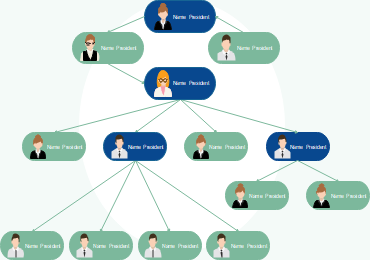12 Meeting Rules to Conduct Effective Meetings
On the off chance that you need your group to be viable, you need meeting rules and guidelines — and you need arrangement about how to utilize them. Numerous groups that have policies don't consistently use them. However, having rules set up that you reliably authorize can fundamentally improve how your group tackles issues and decides.
Organizations and companies all over the world can save an enormous measure of cash and improve their efficiency extraordinarily by basically having fewer silly meetings. Furthermore, an ideal approach to restrict the number of futile meetings being held is to build up a bunch of meeting rules that everybody should follow.

12 Rules to Conduct Effective Meetings
1. Allot a Meeting Facilitator
To run successful meetings, somebody should encourage. The facilitator's job is to guarantee that the meeting starts and finishes on schedule, covers and adheres to the plan, and observes all settled meeting rules.
The meeting facilitator's critical obligation is to establish a climate where participants can cooperate to arrive at a compelling arrangement or end inside the assigned time. That may incorporate things like:
- Presenting participants
- Guaranteeing everybody is offered time to share his/her info
- Cutting off-point conversations
The legitimate facilitator for any meeting is the individual who's putting together the meeting. So, suppose you're sending meeting rules and welcomes to your collaborators. In that case, you should be set up to go about as its facilitator and keep the meeting you planned on target, so it's profitable for all participants.
2. Call Just Selected Individuals.
The choice is about who is to rely upon what you need to achieve in the meeting. This may appear to be too evident to even think about expressing. However, it's astonishing the number of meetings that happen without the ideal individuals there. Don't rely upon your judgment about who should come. Ask a few others for their assessment too. If conceivable, call every individual to educate them concerning the meeting, its general reason and why their participation is significant.
3. Take Follow-Ups
Follow-up yours assemble with a conference notice, including the motivation behind the meeting, where it will be held, and when the rundown of members and whom to contact if they have questions. Send out a duplicate of the proposed plan alongside the meeting notice. Have somebody assigned to record significant activities, tasks, and due dates during the meeting. This individual ought to guarantee that this data is conveyed to all members not long after the meeting.
4. Unequivocally Work to the Guidelines and Rule Out Methods.
Many practices aren't your group's standard procedures until everybody in the group consents to utilize them. Initially used the term guidelines to depict baseball rules that groups agreed to use in a specific setting or grounds. Those meeting rules were — and still are — fundamental for playing baseball reasonably across settings that are not actually the equivalent. Additionally, your colleagues set aside some effort to talk about and build up a typical comprehension of what your rules mean. With guidelines and regulations, you can increment the possibility of executing the rules reliably and successfully in various circumstances.
5. Mind Map the Meeting Plan Ahead of Time.
Sharing a plan for your meeting a long time before the meeting happens helps participants see what will be anticipated from them during the meeting. The best example for this is mind maps; this encourages them to accumulate any data they may require to take an interest in the meeting gainfully. You can easily make a mindmap with EdrawMind with their ready-made templates. It will save you significant time as all you have to do is add the information. Just go to their website or download the app, and you are good to go.
6. Share Basic Meeting Information Prior
Suppose the individuals you've welcomed don't have the foggiest idea of what they need to plan for. In that case, you risk facilitating a subsequent meeting to examine subtleties. Especially those that you were unable to assemble in the primary meeting since individuals didn't know what addresses they would have been asked or what data they would have to give.
7. Build Up a Group Mindset That is Consistent with the Guidelines.
The practices your group utilizes are driven by the mindset (that is, qualities and suppositions) you work from. On the off chance that you embrace successful standard procedures yet work from an inadequate mindset, the guidelines won't work. For instance, on the off chance that you accept that you are directly about your co-worker being off point, you won't test your derivation — you'll simply advise him to get back on the theme. However, in the event that you expect that you may be missing something that Bob sees, you will be interested in the association your co-worker sees between his remark and the current point.
8. Breaking Point Conversation Times for Every Plan Thing
Meetings ought to be no longer than 60 minutes, as an hour is by and large the longest time individuals can remain really locked in. To this end, it's significant that your meeting completes on schedule.
To ensure you don't use up all available time before covering each thing on your plan, it helps restrict the measure of time you'll spend on every subject you need to cover. Consider assigning a particular standard of time to every plan thing. At that point, when time's up, proceed onward.
9. Offer Everybody the Chance to Take an Interest.
Not every person is happy with battling for the floor, but rather will joyfully make some noise if you offer them the chance. During the meeting, it's the facilitator's job to guarantee that the meeting isn't overwhelmed by a couple of participants. This should be possible by effectively asking less decisive participants their sentiments during the meeting or looking for actual signs that somebody is battling to break into the conversation.
10. Examine How You Are Utilizing the Standard Procedures and How to Improve.
Require five minutes toward the finish of each group meeting to examine where you utilized the guidelines well and where you can improve. Guidelines are useful assets for improving group measures. With a proper arrangement of practices and express understanding about what they mean and how to utilize them, your group will see better outcomes.
11. Assessing the Overall Meeting
Leave at least ten toward the meeting's finish to assess the meeting and avoid this part of the meeting. Have every part rank the meeting from 1-5, with five as the most elevated, and have every part clarify their positioning.
12. Ending the Meeting Properly
Always end meetings on schedule and endeavor to finish strong. At the finish of a meeting, survey activities and tasks, and set the ideal opportunity for the following meeting and inquire as to whether they can make it or not. Clarify that meeting minutes or potentially activities will be accounted for back to individuals in probably seven days (this helps make all the difference for energy).
Remember that meeting rules are over the top expensive exercises when one considers the expense of work for the meeting and what amount can or can't complete in them. So pay attention to meeting the board very.





